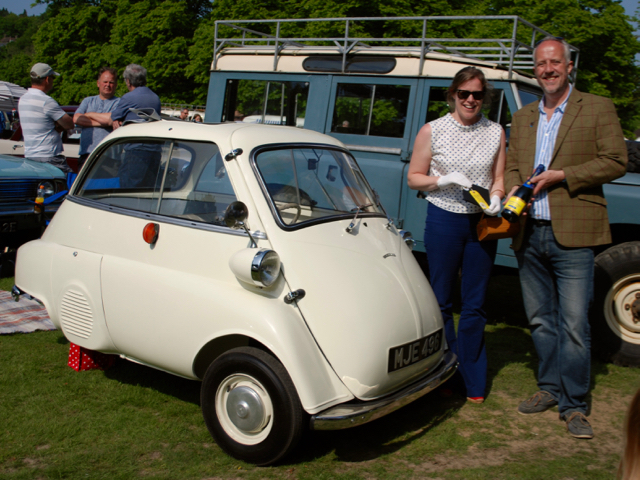What the heck? This Isetta door is hinged on the wrong side!
Do they change the hinge side if the car is built for countries where they drive on the wrong side of the road?
https://mariothemultipla.wordpress.com/2016/06/08/the-busiest-day-of-the-year/[1]
It seems they did indeed.
In 1955, the BMW Isetta became the world's first mass-production car to achieve a fuel consumption of 78 mpg‑US (94 mpg‑imp; 3 L/100 km)
The British cars had right-hand drive with the door hinged from the right hand side of the car and the steering column moved across to the right as well. Right-hand drive meant that both the driver and t he engine were on the same side, so a 27 kg (60 lb) counterweight was added to the left side to compensate. Dunlop tyres were used, and Lucas electrics replaced the German Hella and Bosch components, with a different headlamp housing being used. Girling brake components replaced the ATE brake parts.
The Isetta was not popular in the UK until a three-wheeled version was introduced. Although three-wheeled vehicles are more prone to rolling-over, there was a financial advantage; they could evade automobile legislation and taxation by being classed as three-wheeled motorcycles, and could be driven with a motorcycle licence. Isetta of Great Britain continued to produce four-wheeled Isettas, but only for export to Canada, New Zealand, and Australia.
As you can see, there were several variations on the design, left and right hand steering, hinged on opposite sides
Released on September 5, 1956, it was the first car produced in Brazil. The car had received government approval as a part of a state-supported drive to establish an automotive industry in Brazil, but ended up being built without government backing.
https://en.wikipedia.org/wiki/Isetta[2]
Thanks David!
References
- ^ https://mariothemultipla.wordpress.com/2016/06/08/the-busiest-day-of-the-year/ (mariothemultipla.wordpress.com)
- ^ https://en.wikipedia.org/wiki/Isetta (en.wikipedia.org)





